In This Article
Need a fun day trip or weekend escape in Bavaria? Head to Nuremberg! Dive into medieval history, explore world-class museums, and stroll vibrant markets. Whether you're wandering castle grounds, sampling sausages, or discovering art, Nuremberg offers an unforgettable mix of old-world charm and lively modern culture.
Nuremberg, Germany Highlights:
- Nuremberg Castle (Kaiserburg): Tour this towering medieval fortress with panoramic views over the city.
- Old Town (Altstadt): Stroll cobbled streets, admire half-timbered houses, and browse quaint shops.
- Documentation Center Nazi Party Rally Grounds: Explore an important museum examining the history of the Nazi era.
- Albrecht Dürer's House: Visit the home of Germany’s most famous Renaissance artist.
- Nuremberg Toy Museum: Delight in centuries of toys and playful exhibits in a charming historic setting.
When I like to visit
The best time to visit Nuremberg is during late spring through early fall (May–September) for pleasant weather and outdoor events, or December to experience the world-famous Christkindlesmarkt (Christmas Market) in all its festive glory.
Tips for getting There
- If you are traveling by car: Nuremberg is easily accessible via Germany’s excellent autobahn network, about 2 hours from Munich and 2.5 hours from Frankfurt.
- By Train: Deutsche Bahn (DB) provides frequent high-speed rail connections from Munich, Frankfurt, Berlin, and other major cities.
- By Plane: Fly into Nuremberg Airport (NUE), just 15 minutes from the city center by U-Bahn (subway) or taxi.
Where I like to stay
- Hotel Victoria Nürnberg – Stylish boutique hotel perfectly located near the Old Town gates and Hauptbahnhof (main train station).
- Melter Hotel & Apartments – Modern suites with kitchenettes, perfect for longer stays in the heart of the city.
- NH Collection Nürnberg City – Elegant hotel offering spacious rooms, a sauna, and easy access to attractions.
Best Things to Do
1. Kaiserburg Castle
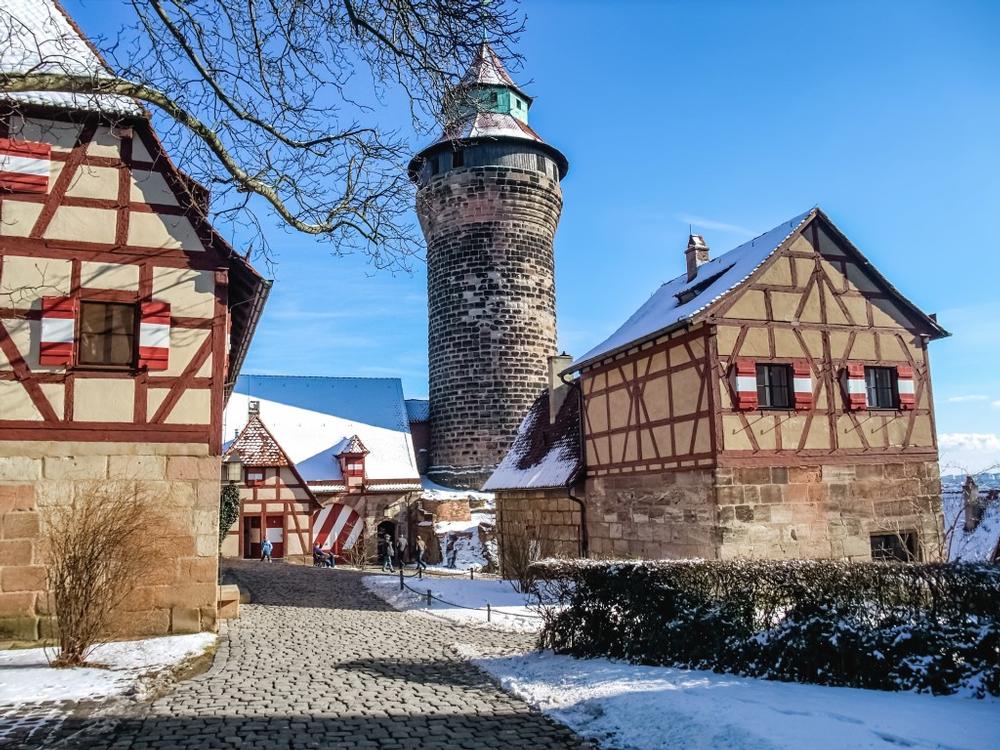
© refresh(PIX)/stock.adobe.com
This castle was built on castle rock and its silhouette has become a Nuremberg landmark. It was first documented as a royal residence in 1050. The royal connection, coupled with its position at the crossroads of important highways, caused the town to prosper. It became a major junction for trade and finance, and for a time was one of the centers of the empire. In 1340, the town hall replaced the castle as the administrative center. The royals moved to more comfortable accommodation and an epidemic in town finally sealed the castle's fate. The castle and grounds are undergoing repairs but are open to the public.
Burgverwaltung Nürnberg, Auf der Burg 17, D-90403 Nürnberg, Phone: +49-91-12-44-65-90
2. Weinstadel
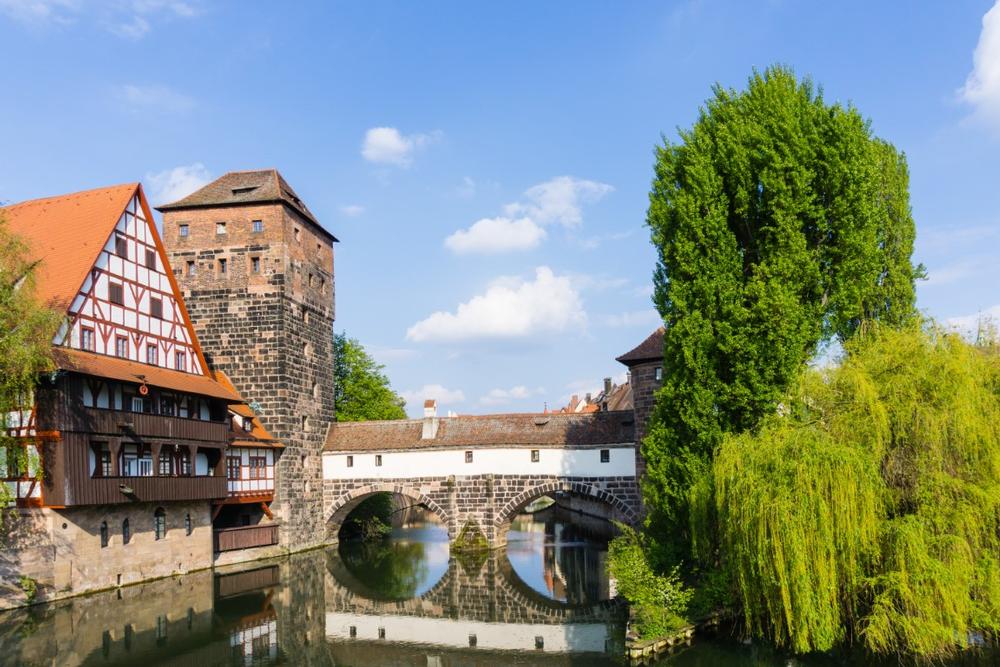
© pusteflower9024/stock.adobe.com
At 48m long, the Weinstadel, translated 'Wine steward', is the largest half-timber building in Germany. There are two half-timber floors above a brick foundation and ground floor, and three further floors in the saddle roof. It was constructed in 1446 and for more than a century was used for only three days a year, during Holy Week, to feed and house lepers. In the late 16th century, it was used as a hospital and a home for artisans and indigent families. The ground floor was used to store wine, hence the name. Since 1950 it has been a student dormitory. It is a photogenic subject in all seasons.
3. Weissgerbergasse
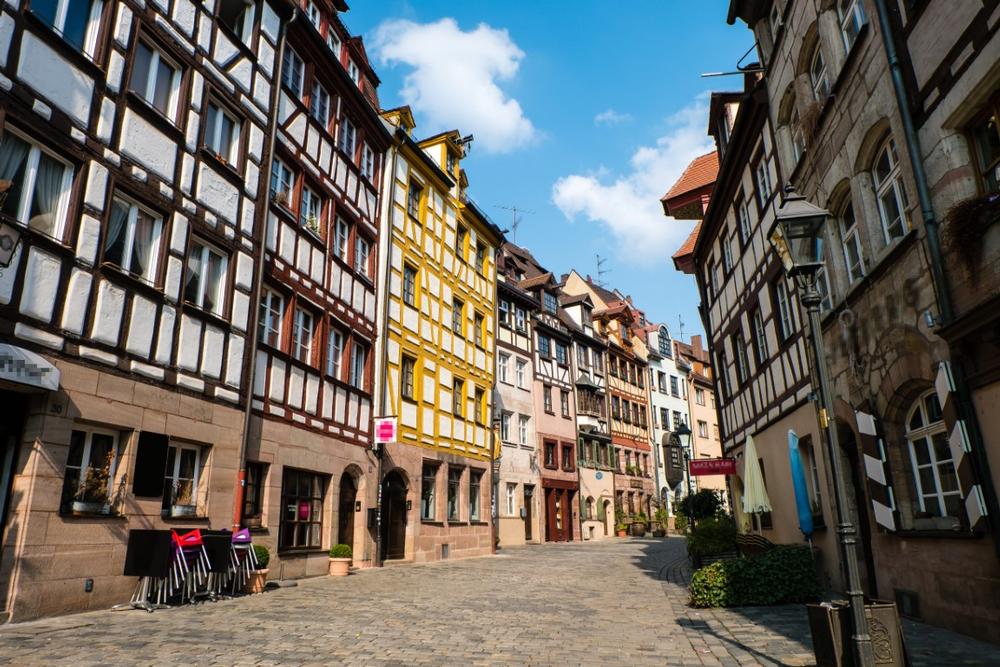
© oxie99/stock.adobe.com
The medieval tanners who worked with white leather lived in this neighborhood in old town Nuremberg. The half-timber homes each had gardens and their own wells which bears testimony to the wealth created by this niche trade. More than 20 of the houses escaped the bombing of World War II and form the largest and best preserved ensemble of artisan houses in the city. The street has been made into a pedestrian mall and the houses have become cafés, bars, boutiques and specialty shops.
4. Albrecht Durer House
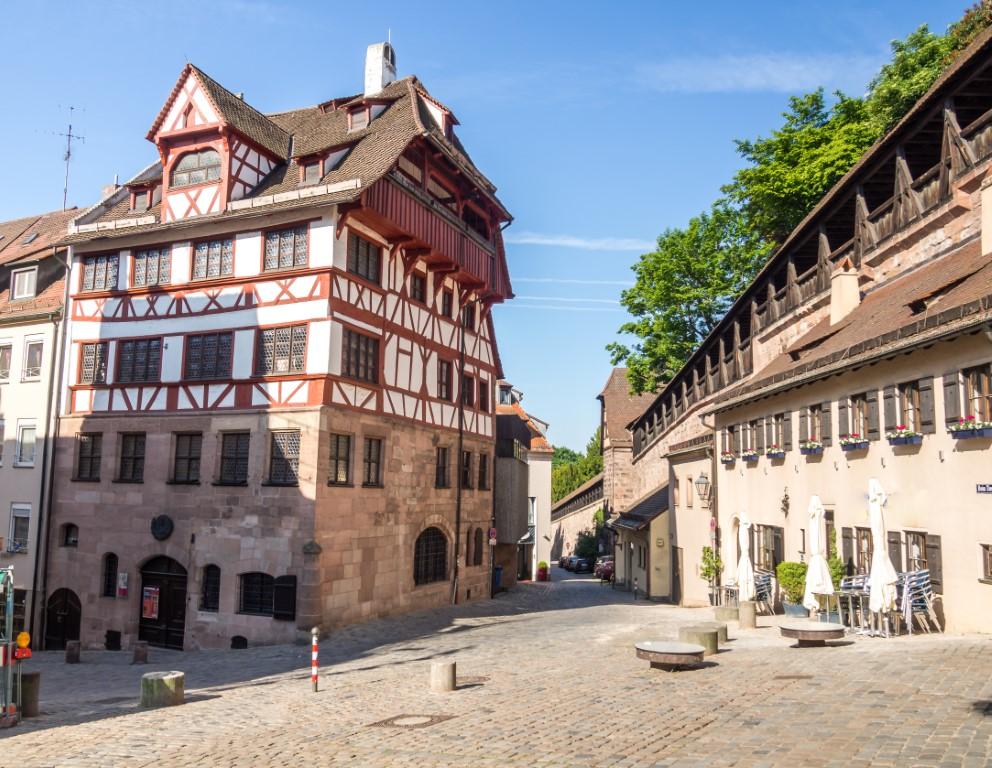
© Animaflora PicsStock/stock.adobe.com
Dürer is Germany's most famous painter. He lived in this massive half-timbered house from 1509 until his death in 1528. Nuremberg was in its heyday and the city attracted many artists. As early as 1675, the significance of the house was recognized and efforts were made to preserve it. In 1828 it became one of the first memorials to an artist, in the world. The Dürer Room contains high quality copies of his works. Tours are led by an actress posing as his wife, Agnes. Workshops on historical painting techniques are held at the house.
Albrecht-Dürer-Straße 39, 90403 Nürnberg, Phone: +49-91-12-31-25-68
5. Subterranean Town Hall Chambers
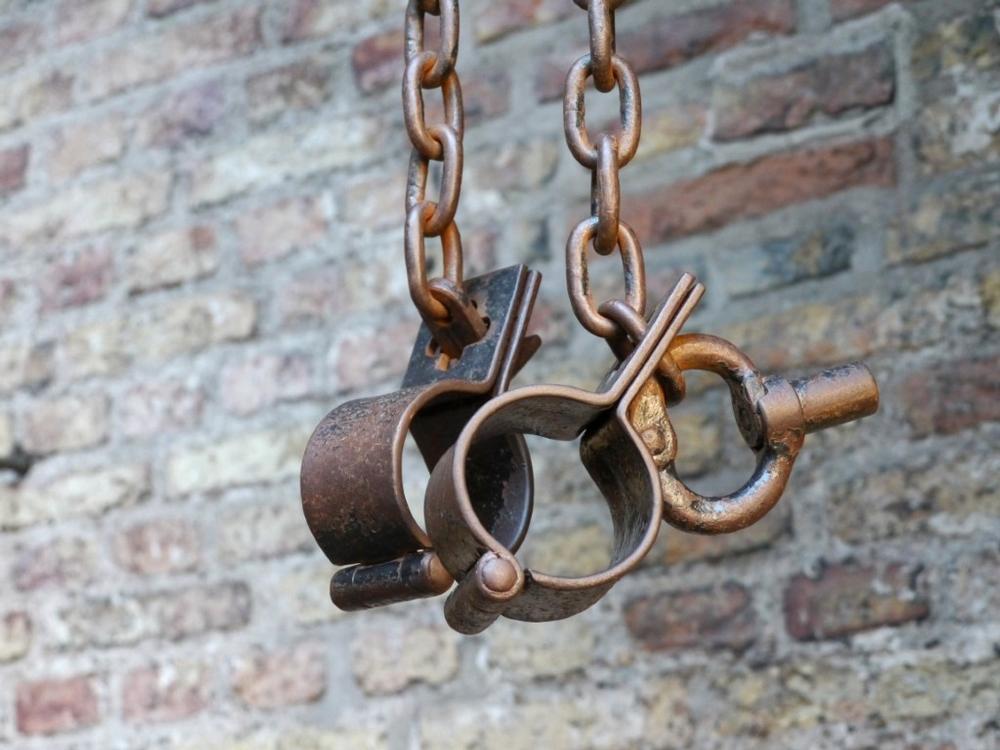
© Dagmar Richardt/stock.adobe.com
Until 1332, the Old City Hall was known as the Bread Hall where bakers made and sold their wares. During the conversion, earth was piled up around the ground floor, turning it into a cellar. This was done to neutralize the threat of floods. The cellar became the city's interrogation center and a prison for those awaiting execution. There are 12 small cells and a torture chamber in the medieval dungeon. When the Ehrenhalle (Hall of Honor) was renovated in 2017, the guided media tours were revised. There are five tours a day in various languages. Children under 10 are not permitted.
Activities and Attractions for Couples:
6. Germanic Museum
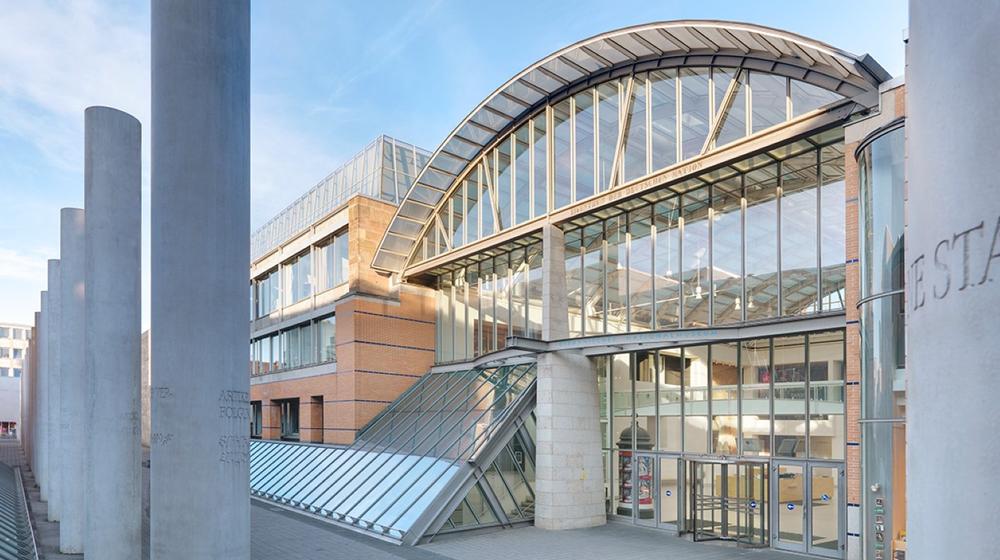
© Germanic Museum
Following the failed attempt at German unification in 1848, a group of individuals, led by Franconian Baron Hans von und zu Aufsess, established the Germanic Museum. The intention was to assemble a compendium of all things pertaining to the history and culture of the German-speaking world. Today, there are 1.3 million objects owned by the museum, 25000 of which are displayed in 23 collections. These include coins, paintings, documents, textiles and toys, many of which have been digitized. They provide a chronological overview from pre-history to the 20th century. The museum buildings themselves constitute a collection of structures from various eras.
Kartäusergasse 1, 90402 Nuremberg, Phone: +49-91-11-33-10
7. Heilig Geist Spital
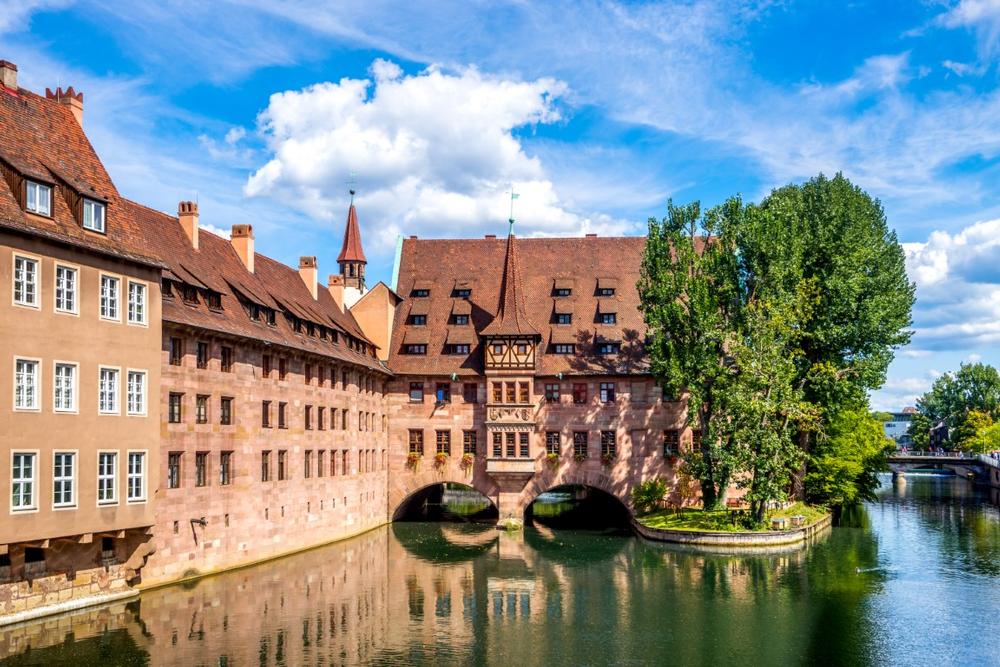
© pure-life-pictures/stock.adobe.com
The Hospital of the Holy Spirit was the largest of its kind in medieval Nuremberg. It was funded by the biggest personal endowment in the Holy Roman Empire up until 1500. Imperial Mayor, Konrad Gross, had the hospital built in 1332 for the care of the elderly and the needy. Later it was extended over the river Pegnitz. It is best viewed and photographed from the north bank of the river. Part of the building is used as a retirement home. The restaurant on the premises is open to the public. It has a medieval atmosphere with candlelight and hunting trophies mounted on the walls.
Spitalgasse 16, 90403 Nürnberg, Phone: +49-09-11-22-17-61
Where I Like to Eat
- Bratwurst Röslein – If you're craving authentic Nuremberg sausages, try this beloved traditional tavern.
- Essigbrätlein – Michelin-starred fine dining featuring creative dishes rooted in Franconian flavors.
- Hausbrauerei Altstadthof – Brewpub offering handcrafted beers and hearty Bavarian fare in a cozy setting.
My favorite local events:
- Christkindlesmarkt (December) – One of Europe’s oldest and most famous Christmas markets, filled with crafts, foods, and festive cheer.
- Blaue Nacht (May) – Annual "Blue Night" art festival with installations, performances, and illuminated buildings across the city.
- Altstadtfest (September) – Traditional festival featuring folk music, crafts, and Franconian food specialties in the Old Town.
My favorite day trips within 30 Minutes of Nuremberg, Germany:
- Erlangen (20–25 min) – Explore this vibrant university town with a charming old town and botanical gardens.
- Fürth (10–15 min) – Discover historic architecture, lively markets, and green parks in this neighboring city.
- Bamberg (30 min) – Wander the UNESCO-listed old town, known for its medieval charm and smoked beer (Rauchbier).
- Fränkische Schweiz (Franconian Switzerland) (30 min) – Hike among dramatic rock formations, castles, and picturesque villages.
- Cadolzburg Castle (20–25 min) – Visit a beautifully restored medieval castle with interactive exhibits.
- Zirndorf Playmobil FunPark (20 min) – A paradise for families with giant Playmobil-themed playgrounds and attractions.
Plan Your Trip









